History, culture and beauty… Greece’s archaeological sites and monuments have it all and more.
The immense cultural heritage of Greece spans back four and a half thousand years and makes each step a visitor takes a journey through centuries of time. Many of Greece’s imposing archaeological monuments have been constructed two and a half thousand years ago and still, every year, attract hundreds of thousands of visitors. A large number of Greece’s monuments that date back to all periods, are included in the World Cultural Heritage list of UNESCO. These monuments include some of the most important of the country such as the Acropolis of Athens and the archaeological sites of Olympia and Delphi. Welcome time travelers!
Archaeological Site of Knossos
Knossos is the heart of the Minoan civilization, according to tradition the seat of the legendary king Minos and the birthplace of thrilling stories, such as the myths of the Labyrinth with its Minotaur and of Daedalus and Icarus. The site was inhabited continuously from the Neolithic period (7000-3000 BC) until the late Antiquity. The first epigraphical testimony derives from the 14th century BC Linear B tablets, where the city is referred to as Ko-no-so. The Minoan settlement of Knossos develops especially during the palatial era, which is defined by the periods of the Old (19th-17th centuries BC) and New Palaces (16th-14th centuries BC) respectively. In the latter period the Minoan civilization reaches its peak, with a vigor that is reflected at all levels: population growth and subsequent residential expansion, economic prosperity and social complexity, flourishing of the material culture with the palatial art reaching its apogee. In 1450 BC the palaces of Crete are destroyed by causes, for which there is no consensus among researchers. Nevertheless, the fall of the palaces marks the end of the Minoan civilization. Only the palace of Knossos will survive for a century still, as the seat of the new rulers of Crete, the Mycenaean’s. The city of the historical times left behind scarce remains, mainly sanctuaries and graves; throughout Greek antiquity, Knossos will survive in the literary sources, from the time of Homer till the Hellenistic historian Diodorus Sikeliotes, as the glorious kingdom of the mythical Minos. Knossos flourished again during the Hellenistic period, while in 67 BC the city was occupied by the Roman consul Quintus Caecilius Metelus Creticus and became a Roman colony. In the medieval times, a few kilometers northwards of Knossos, would emerge the new capital of the island, the city of Chandax, namely the contemporary Heraklion.
The location of ancient Knossos was first spotted in 1878 by the Cretan antiquarian and merchant Minos Kalokairinos. Arthur Evans conducted systematic excavations at the site between 1900 and 1931, bringing to light the palace, a large section of the Minoan city, and its cemeteries. Since then, the site and its wider region have been excavated by the British School of Archaeology at Athens and the local Archaeological Service. The restoration of the palace to its present form was carried out by Arthur Evans. Conservation and consolidation works are carried out by the Archaeological Service of the Ministry of Culture, imposed by the need to preserve and protect the monuments uncovered.
Opening hours:
01Nov – 31Mar Mon-Sun, 0800-1700
01Apr – 31Oct Mon-Sun, 0800-2000
Read more about the Archaeological Site of Knossos
Odeon of Herod Atticus
The striking Odeum of Herod Atticus (also in Greek Herodeion) was the last public edifice of the antiquity to be added in the Acropolis area. It was erected by Herod Atticus in memory of his wife Regilla who died in AD 160. A wealthy scion of a notable Athenian family and a major benefactor of the city, Herod adorned Athens with a monument that has been admired since antiquity. The structure was an amphitheater of the typical style of the imperial age. It was intended mainly for musical events and could accommodate 5,000 people. The three-story scene, preserved to a height of 28 m, featured rich architectural embellishments, while the wooden roof was made of expensive cedar of Lebanon. It is highly probable that not only the Odeum had been roofed in its entirety, but also that the huge roof had no interior supports to rest upon, which even by today’s standards is considered a construction miracle. Like most ancient Attic monuments, Herodeion was destroyed during the raid of Heruli in AD 267 and was later incorporated into the medieval fortification wall of Acropolis. After an extensive restoration in the 1950s, Herodion has revived as a cultural venue, mainly of the Athens Festival.
Opening hours:
01Apr – 15Nov Mon-Sun, 0800-1700
16Nov – 31Mar Mon-Sun, 0800-1500
Read more about the Odeon of Herod Atticus.
Asklepieion of Epidaurus
UNESCO World Heritage List
A major crowd puller among the archaeological destinations of Greece, Epidaurus is famed for its unmatched theatre, as well as for its Asklepieion, thus named the sanctuaries sacred to Asclepius, the healing god and son of Apollo. Combining religious faith with empirical knowledge and occult rituals with actual treatment, the Asklepieia functioned pretty much as hospitals and, needless to say, they were of great significance to Greeks and Romans alike. The Asklepieion of Epidaurus in particular was the most important therapeutic center of the ancient Greek world, followed by that of Kos, the birthplace of Hippocrates and medicine.
Tucked away amid rocky heights, the Epidaurian sanctuary lies in an inland valley of the Argolid peninsula in the Peloponnese. The tranquil, scenic landscape and the abundant nearby mineral springs should have something to do with the cure and recovery of the patients. Developed out of an earlier cult of Apollo, the sanctuary of Asclepius reached its peak in the 4th century BC when it was adorned with its principal monuments seen today, especially the temple of the god, the tholos and the renowned theatre, all three considered masterpieces of the late classical Greek architecture. Even by today’s standards, the theatre of Epidaurus stands out as a unique artistic achievement through its admirable integration into the landscape and above all the perfection of its proportions and incomparable acoustics.
Opening hours:
01Nov – 31Mar Mon-Sun, 0800-1530
01Apr – 31Oct Mon-Sun, 0800-2000
Read more about the Archaeological Site of The Asklepieion of Epidaurus
Acropolis of Athens
A UNESCO World Heritage Site
For over two millennia, ascending the Acropolis hill has been a must-do for visitors to Athens; it could not be otherwise for the Acropolis monuments, the universal and timeless symbols of the classical spirit bequeathed by Greek Antiquity to the world.
5th century BC Athens is the leading city-state of the ancient Greek world. Moreover, it is the birthplace of democracy and theatre, attracting the greatest minds of the time. Philosophy thrived as the cornerstone of intellect, architects, sculptors and potters turned their inspirations into masterpieces of art, the unsurpassed works of ancient Greek drama were created. The historical figure that defines this period of cultural apogee is Pericles; 5th century is the so-called Pericles’ Golden Age.
It was Pericles who implemented an ambitious program for the reconstruction of the city’s most important sanctuary: that of the patron goddess Athena upon Acropolis, which, after the Persian invasion, was a heap of ruins. It took some 50 years for the finest architects and craftsmen of the time to complete the Herculean task under the supervision of the great sculptor Phidias.
Opening hours:
01Nov – 31Mar Mon-Sun, 0800-1700
01Apr – 31Oct Mon-Sun, 0800-2000
Read more about the Acropolis of Athens
Read more about the new Acropolis Museum
The Theater of Epidaurus
A UNESCO World Heritage Site
The theatre of Epidaurus represents the finest and best-preserved example of a classical Greek theatre. Even by today’s standards, this monument stands out as a unique artistic achievement through its admirable integration into the landscape and above all the perfection of its proportions and incomparable acoustics. It was built in 330-20 BC and enlarged in the mid-2nd century AD. The overall 55 rows of seats rest on a natural slope and face the stage area set against a backdrop of lush landscape. The theatre is marveled for its exceptional acoustics. Any sound on the open-air stage, whether a stentorian voice or a whisper, a deep breath or the sound of a match struck is perfectly audible to all spectators, even in the topmost row of seats, that is, nearly 60 m away. The answer to what makes the sound transmit so well comes from recent scientific studies: The arrangement of the stepped seating rows acts as an acoustic filter that deadens low-frequency background sounds, such as the murmurs of the audience, while amplifying the high-frequency sounds from the stage.
Opening hours:
01Apr – 31Oct Mon-Sun, 0800-2000
01Nov – 31Mar Mon-Sun, 0800-1530
Read more about the Archaeological site of the Theater of Epidaurus
Ancient Agora of Athens
The Agora was the heart of ancient Athens, the focus of political, commercial, administrative and social activity, the religious and cultural center, and the seat of justice. The site was occupied without interruption in all periods of the city’s history. It was used as a residential and burial area as early as the Late Neolithic period (3000 B.C.). Early in the 6th century, in the time of Solon, the Agora became a public area.
After a series of repairs and remodeling, the Agora reached its final rectangular form in the 2nd century B.C. Extensive building activity occurred after the serious damage made by the Persians in 480/79 B.C., by the Romans in 89 B.C. and by the Herulae in A.D. 267 while, after the Slavic invasion in A.D. 580, the site was gradually abandoned. From the Byzantine period until after 1834, when Athens became the capital of the independent Greek state, the Agora was again developed as a residential area.
The first excavation campaigns were carried out by the Greek Archaeological Society in 1859-1912, and by the German Archaeological Institute in 1896-97. In 1890-91, a deep trench cut for the Athens-Piraeus Railway brought to light extensive remains of ancient buildings. In 1931 the American School of Classical Studies started the systematic excavations with the financial support of J. Rockefeller and continued until 1941. Work was resumed in 1945 and is still continuing. In order to uncover the whole area of the Agora it was necessary to demolish around 400 modern buildings covering a total area of ca. 12 hectares.
In the 19th century the four colossal figures of Giants and Tritons at the facade of the Gymnasium were restored by the Greek Archaeological Society. In the years 1953-56, the Stoa of Attalos was reconstructed to become a museum and in the same period the Byzantine church of Aghioi Apostoloi, built around A.D. 1000, was restored by the American School. Between 1972 and 1975, restoration and preservation work was carried out at the Hephaisteion; the area was cleared of the vegetation, and the roof of the temple was repaired in 1978 by the Archaeological Service.
Opening hours:
01Nov – 31Mar Mon-Sun, 0800-1500
01Apr – 31Oct Mon-Sun, 0800-2000
Read more about the Archaeological Site of the Ancient Agora of Athens
Archaeological Site of Mycenae
Mycenae, the legendary kingdom of the Atreides, is situated upon a small hill-top on the road leading from the Argolic Gulf to the north (Corinth, Athens, etc.). The site was inhabited since the Neolithic times (about 4000 BC) but reached its peak during the Late Bronze Age (1350-1200 BC), giving its name to a civilization which spread throughout the Greek world.
During that period, the acropolis was surrounded by massive “cyclopean walls”, built in three stages (ca.1350, 1250 and 1225 BC), with the exception of the SE flank where a steep ravine provided natural defense. A palace was built on the summit of the hill; while towards the Argolic plain laid the wall-painted “Cult Center”, the main gate or “Lion Gate” and the “Grave Circle A”, the burial ground of the Mycenaean royalty. On the NE side, a tunnel leading to a subterranean fountain was built in “cyclopean” masonry in around 1225 BC.
Outside the walls lay the residential area of Mycenae, as indicated by the number of private houses brought to light by the excavations. However the landscape here is dominated by the “Grave Circle B”, and the monumental tholos tombs, among them the ones attributed to the legendary royal family of Mycenae. The burial monuments of Mycenae also yielded the treasure of finds, now exhibited at the National Archaeological Museum and at the onsite Museum of Mycenae.
Mycenae was occupied without interruption until 468 BC when it was conquered by the city of Argos and its population was banished. It was reoccupied in the 3rd century BC for a relatively short period. When the ancient writer Pausanias visited the place in the 2nd century AD, it had been deserted long ago.
In 1876 Heinrich Schliemann started the excavations which led him to the discovery of the Homeric Mycenae.
Opening hours:
01Apr – 31Oct Mon-Sun, 0800-2000
01Nov – 31Mar Mon-Sun, 0800-1500
Read more about the Archaeological Site of Mycenae
Archaeological Site of Delphi
A Unesco World Heritage Site
Cradle of one of the most important sanctuaries of the Greek antiquity and its most famous oracle was the land of Phocis and specifically the green valley of the river Pleistos. To the north, the valley is surrounded by the Mount Parnassus, while on the south it opens to the sea of the Corinthian Gulf. A landscape of untamed beauty and a crossroad of natural passages in the heart of mainland Greece, the land of Delphi meant much more for the ancient Greeks: According to the legend, Zeus let two eagles fly from the ends of the world to find the navel of the Earth. And the sacred birds met at Delphi.
In the course of 1500 years, the Delphi sanctuary and oracle mirrors the ancient history, as its fate was inextricably tied, not only with the history of Greece but also of the then known world. The powerful monarchs of the East seek its oracles, while there isn’t a single event with some historical significance in the Greek region, in which the Delphic oracle has not implicitly or explicitly taken part or stand. Due to its wealth and influence was the apple of discord and a magnet for invaders. The prevalence of Christianity deprived Apollo from its shelter and Pythia was silenced. The last Delphic oracle uttered to the emperor Ioulianos (AD 360-363) would be its swan song. In AD 394 the decree of the emperor Theodosius I banned the pagan cults and their sanctuaries. One year earlier were held the last Olympic Games of the antiquity.
Opening hours:
01Nov – 31Mar Mon-Sun, 0800-1500
01Apr – 31Oct Mon-Sun, 0800-2000
Read more about the Archaeological site of Delphi
Archaeological Site of Olympia
“Olympia, the sanctuary of Zeus and birthplace of the Olympic Games”
A UNESCO World Heritage Site
Olympia, the sanctuary of Zeus and birthplace of the Olympic Games, lies in a verdant valley of the western Peloponnese at the confluence of the rivers Alpheios and Kladeos. A landscape of great natural beauty, the whole valley was in ancient times thickly wooded and full of wild olive trees, from the leaves of which were made the wreaths that crowned the Olympian champions; hence the site was named Altis, meaning grove. It was also named Olympia after Mt Olympus, the abode of Zeus.
The beginnings of the sanctuary and its games are hazed in myths: Zeus prevailed in Olympia after dethroning his own father Cronus, who was worshiped upon the namesake hill to the north of the sanctuary. As to who was the founder of the games, several heroes claim the title; among them Hercules and Pelops, ancestor of the Homeric Agamemnon and mythical king of the Peloponnese (the very name of the peninsula meaning the island of Pelops). We reach the realm of history in 776 BC, the year of the first recorded athletic event that humanity nowadays celebrates as the Olympic Games. Their ancient name was Olympia and they were held every four years in honor of Zeus. The Olympiad, the four-year period between two successive celebrations, became the standard chronological system of the ancient Greek world.
The Olympics were the PanHellenic top sporting event that embodied the ideal of fair competition among free and equal men, as conveyed in the words let the best win. There could be no greater honor for a youth of the time than to be crowned with the kotinos, the champion’s olive wreath, nor greater glory bestowed on the athlete’s birthplace: when back home, part of the city walls were pulled down for the champion to enter. Before the opening of the Games, the Sacred Truce was proclaimed, the treaty that imposed the suspension of wars and the cessation of all kinds of hostilities during the games. As an ideal of peace and reconciliation, the sacred truce lies at the heart of the Olympic values and is the most important legacy left by the ancient games to their modern successors.
The last Olympics of antiquity were held in AD 393, shortly before the emperor Theodosius I banned paganism and closed down the ancient sanctuaries. Then came successive earthquakes and river floods to bury the ancient ruins for centuries until the archaeological excavations brought them back to light in 1875. Twenty years later, in 1896, revived the first, and now international, Olympic Games of the modern era, held in the Panathenaic Stadium in Athens.
The archaeological site of Olympia, one of the largest in Greece, yielded a singularly rich concentration of monuments and works of art, such as the famous statues of Hermes by Praxiteles and Nike by Paeonius. Throughout antiquity, each century added its own structures, which gradually formed the complex topography of the sanctuary: the sacred precinct of Zeus, namely the temenos of Altis, enclosed the temples, votive offerings, and structures related to the religious activities. Outside the enclosure lay the athletic venues, the officials’ quarters, the guesthouses and baths for athletes and visitors alike.
Opening hours:
01Apr – 31Oct Mon-Sun, 0800-2000
01Nov – 31Mar Mon-Sun, 0800-1500
Read more about the Archaeological Site of Olympia
Temple of Poseidon
The sanctuary at Sounion is one of the most important sanctuaries in Attica. Sporadic finds point to the conclusion that the site was inhabited in the prehistoric period but there is no evidence of religious practice in such an early date. “Sounion Hieron” (sanctuary of Sounion) is first mentioned in the Odyssey, as the place where Menelaos stopped during his return from Troy to bury his helmsman, Phrontes Onetorides. Finds dated to the 7th century BC onwards increase in number, indicating the existence of organized cult on two points of the promontory: at the southern edge where the temenos of Poseidon was situated, and about 500 m. to the NE of it, where the sanctuary of Athena was established.
Important votive offerings were dedicated during the 6th century B.C., but the architectural form of both sanctuaries remained unpretentious until the beginning of the 5th century B.C., when the Athenians initiated the construction of an imposing poros temple in the temenos of Poseidon. The building was never completed, though, as both the temple and the offerings were destroyed by the Persians in 480 BC. In the following decades, Sounion, like the rest of Attica, flourished, and an important building project was undertaken at both sanctuaries. At the end of the 5th century and during the Peloponnesian War, the Athenians fortified Sounion cape. From the 1st century BC. onwards, the sanctuaries gradually declined and Pausanias, who sailed along the coast of the promontory in the mid-2nd century AD, mistook the prominent temple on the top of the hill as the temple of Athena.
The site of the temple was known in the following centuries, as is proved by descriptions of modern travelers, who visited Sounion before the excavations started. Several of them, carved their names on the ruins, e.g. Lord Byron.
Restricted excavations in the sanctuary of Poseidon were conducted in 1825 by the Dilettanti and by the German architect W. Doerpfeld. Systematic investigation was undertaken between 1897 and 1915 by the Athens Archaeological Society, under the direction of V. Stais, with the collaboration of A. Orlandos. Since 1994, the Archaeological Society has been carrying out excavations at the Fortress.
Opening hours:
01Apr – 31Oct Mon-Sun, 0800-2000
Read more about the Temple of Poseidon in Sounion, Athens
Archaeological Site of Akrotiri of Thera
It is one of the most important prehistoric settlements of the Aegean. The first habitation at Akrotiri dates from the Late Neolithic times (at least the 4th millennium BC). During the Early Cycladic period (3rd millennium BC), a sizeable settlement was founded, and in the Middle Cycladic period (ca. 20th-17th centuries BC) it was extended and gradually developed into one of the main urban centers and ports of the Aegean. The large extent of the settlement (ca. 20 hectares), the elaborate drainage system, the sophisticated multistoried buildings with the magnificent wall-paintings, furniture and vessels, show its great development and prosperity. The various imported objects found in the buildings indicate the wide network of its external relations. Akrotiri was in contact with the Minoan Crete but also communicated with the Greek Mainland, the Dodecanese, Cyprus, Syria and Egypt. The town’s life came to an abrupt end in the last quarter of the 17th century BC when the inhabitants were obliged to abandon it as a result of severe earthquakes. The eruption followed. The entire island and with it the prehistoric town of Akrotiri were buried under the volcanic materials which covered the buildings and their contents, like a protective shield, as in the case of the Roman Pompei.
Evidence of habitation at Akrotiri first came to light in the second half of the 19th century. The systematic excavations began in 1967, by Professor Spyridon Marinatos under the auspices of the Archaeological Society at Athens. He decided to excavate at Akrotiri in the hope of verifying an old theory of his, published in the 1930′s, that the eruption of the Thera volcano was responsible for the collapse of the Minoan civilization. Since his death in 1974, the excavations have been continued under the direction of Professor Christos Doumas. No interventions are made on the uncovered monuments unless it is necessary for their consolidation or for the preservation of the evidence, including information concerning the destruction of the settlement.
Opening hours:
01Nov – 31Mar Tue-Sun, 0800-1500
01Apr – 31Oct Mon-Sun, 0800-2000
Read more about the Archaeological Site of Akrotiri of Thera (Santorini)
Acropolis of Lindos
Beneath the modern village of Lindos lies buried one of the most important ancient cities of Rhodes and the eastern Aegean. The only visible today ancient monuments preserve the mighty bare rock that rises from the sea at an altitude of 116 meters and is a landmark of Lindos’ landscape. This is the monumental citadel of the renowned in antiquity sanctuary of Athena Lindia and the medieval castle of the Knights Hospitaller. Lindos’ history, though, starts much earlier, as evidenced by the occasional finds that came to light in the wider area and date from the Neolithic to the Mycenaean periods.
Already from its historical dawn, Lindos rises through the haze of myth as a powerful force. Tlipolemos, son of Hercules, is mentioned as the first settler who brought his Dorians to Rhodes and founded the three major cities of the island, Lindos, Ialyssos and Kamiros, which together with Kos, Cnidus and Halicarnassus formed later a strong confederation, the “Dorian Exapolis”. Situated advantageously at the bay of Megalos Yalos, Lindos secured control over the western side of the island. Furthermore, Homer lists Lindos among the Greek cities that took part in the Trojan War, a quite early testimony of its naval power.
The golden age of Lindos was the Archaic period (7th-6th centuries BC), when the city participated in the Greek colonial movement, founding, among others, the city of Gela in Sicily. Dominant figure of the 6th century was the tyrant Kleoboulos, one of the seven sages of the ancient Greek world. In his years were erected the first monumental buildings of the acropolis, such as the temple of Athena.
In 408/7 BC Lindos, Ialyssos and Kamiros co-founded in the northernmost part of the island the greatest city-state of the time, namely the city of Rhodes. Although it ceased to be politically and economically independent, Lindos remained an important center, thanks to its famous sanctuary, which acquired a monumental form with propylaea and staircases in the Hellenistic period. During the Middle Ages the ancient citadel was used as a fortress and its defensive character was reinforced, especially in the years of the Knights’ reign (1309-1522).
Opening hours:
01Nov – 31Mar Tue-Sun, 0800-1500
01Apr – 31Oct Mon-Sun, 0800-2000
Read more about the Archaeological Site of the Acropolis of Lindos
Temple of Olympian Zeus
The devotional character of the site goes back to prehistoric times, while the establishment of the sanctuary of Zeus is attested in the early historic era. In ca. 515 BC the tyrant of Athens Peisistratus initiated the construction of a monumental temple that was left unfinished because of the fall of the tyranny in Athens. Much later, in 174 BC, Antiochus IV Epiphanies, the king of Syria, attempted to continue the erection of the temple, which was finally completed by the Roman emperor Hadrian, in AD 124/125.
Among the largest monuments of the ancient world (110.35 m. in length and 43.68 m. in width) the Hadrian’s temple of Zeus bore a double row of 20 columns on the flanks and three rows of 8 columns on the narrow sides. Apart from its size, this building was the first example where colonnades of the Corinthian order had been used on the exterior of a major temple. Within the temple stood the colossal gold-and-ivory cult statue of Zeus, while outside the building an equally colossal statue of Hadrian was raised by the Athenians in honor of the Roman emperor’s generosity. In fact, Hadrian’s reign marked the last flourishing period of ancient Athens.
Opening hours:
01Apr – 31Oct Mon-Sun, 0800-2000
01Nov – 31Mar Mon-Sun, 0800-1500
Read more about the Temple of Olympian Zeus
Archaeological Site of Delos
A World’s Cultural Heritage Site protected by UNESCO.
Delos was one the most important PanHellenic sanctuaries, and, according to mythology, the birth-place of Apollo and Artemis. The first evidence of habitation on the island dates from the 3rd millennium BC, and important remains of the Mycenaean period have been uncovered in the area of the sanctuary. In the 7th century BC Delos was already a known Ionic center because of its religious importance as the birth-place of Apollo. Athenian influence was initiated on the sanctuary with the first purification of Delos by Peisistratus in 540 BC but it gradually developed into a proper domination lasting – with short intervals – until the end of the 4th century BC, when Delos was finally declared free and independent (314 BC). The independence of the island lasted until 166 BC when the Romans gave it over to the Athenians. The second Athenian domination started with the expulsion of the Delians to Achaia, in the Peloponnese. The declaration of Delos as an “international” harbor by the Romans led to an influx of foreigners who became a significant element of the island’s population. The absence of taxes resulted to the concentration of trade activity on the island and, subsequently, to its economic prosperity. The close relation of Delos with Rome, though, was the main reason for its decline. During Mithridates’ wars against the Romans, Delos suffered severe damage in the raids of 88 and 69 BC. Since then, the island’s prosperity gradually came to an end. In the 2nd and 3rd centuries AD only a small settlement existed on Delos and, as Christianity had gradually replaced the ancient religion, the island finally lost its importance.
Delos, however, was a sacred place with splendid buildings and sanctuaries and as such, it was never forgotten; many references are preserved by travelers who visited the island in the last centuries. Numerous pieces of sculpture were transferred to museums of Greece and abroad, while marbles from the ancient buildings were used as building material by the inhabitants of the nearby islands. Excavations on Delos started in 1873 by the French School of Archaeology at Athens and by 1914 the most significant sections of the ancient site had been uncovered. The years 1958-1975 were also a period of intensive excavations, which continue up to date by the French School of Archaeology. Restricted excavations were also conducted by Greek archaeologists at the beginning of the 20th century. In 1990 Delos was included in the World’s Cultural Heritage Sites and Monuments, protected by the UNESCO.
Opening hours:
01Apr – 31Oct Mon-Sun, 0800-2000
01Nov – 31Mar Tue-Sun, 0800-1500
Read more about the Archaeological Site of Delos
Credit to Greek Travel Pages.

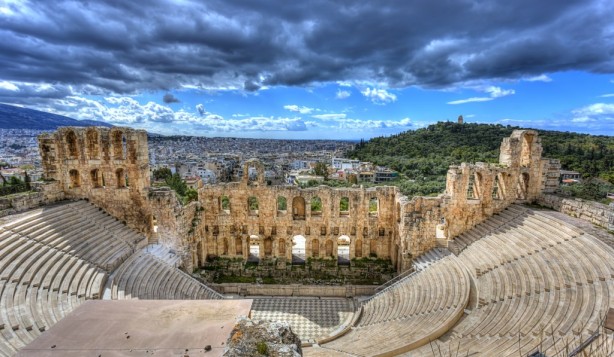
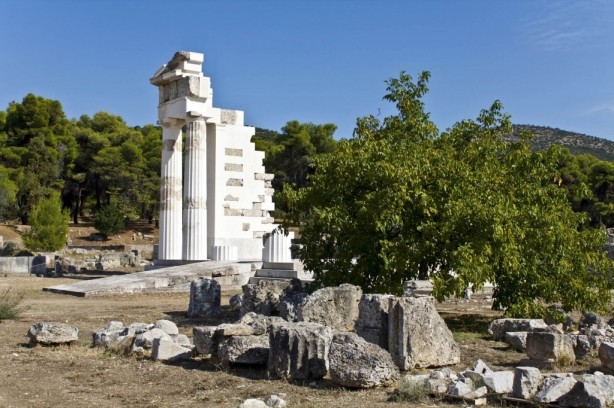

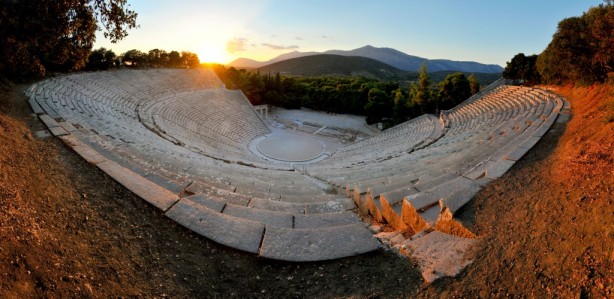
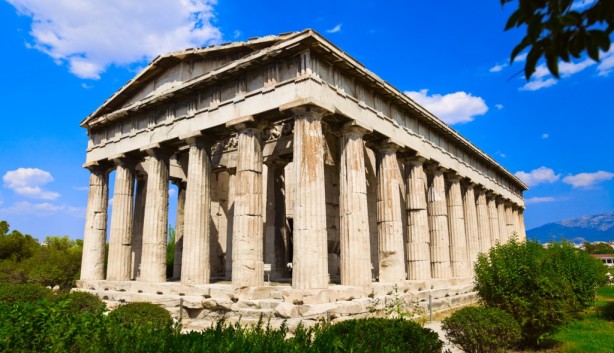
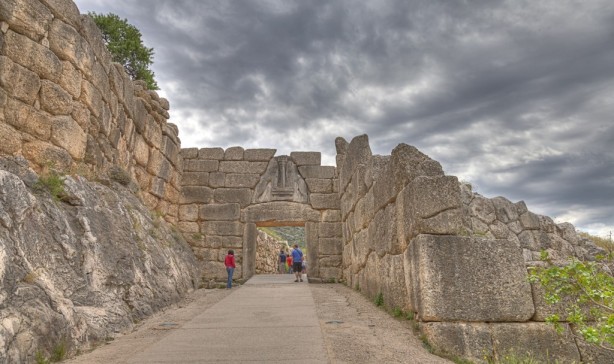
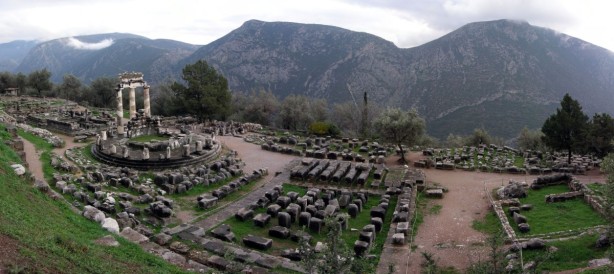
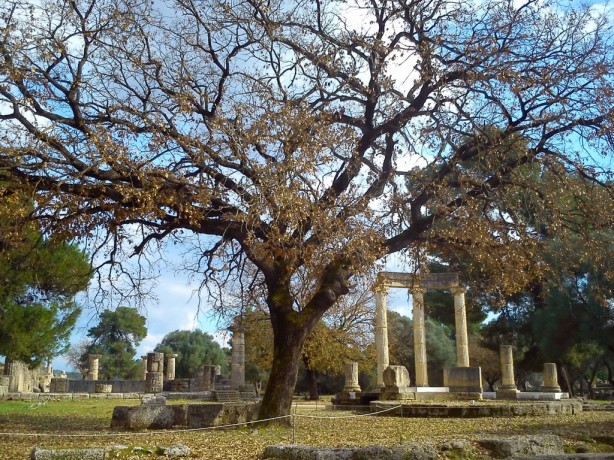

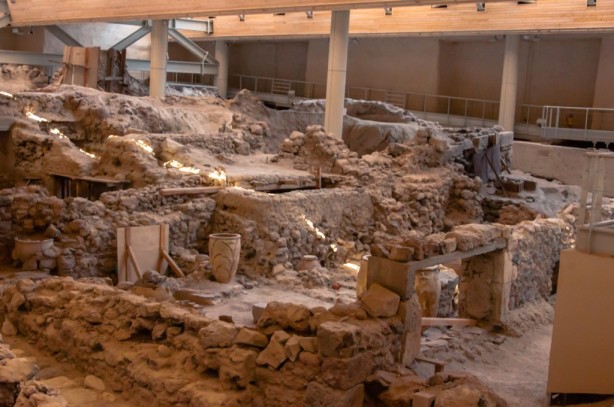


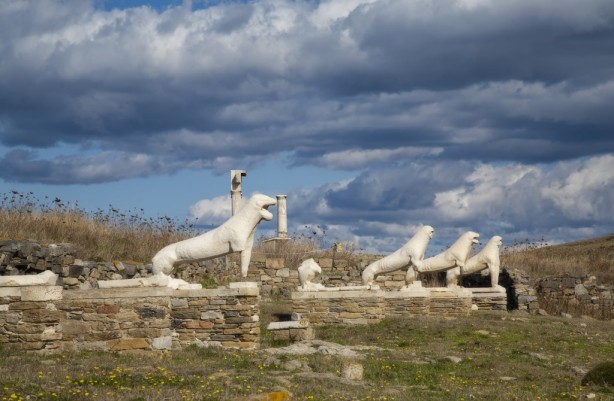

[…] 14 Important Archaeological Sites of Greece […]